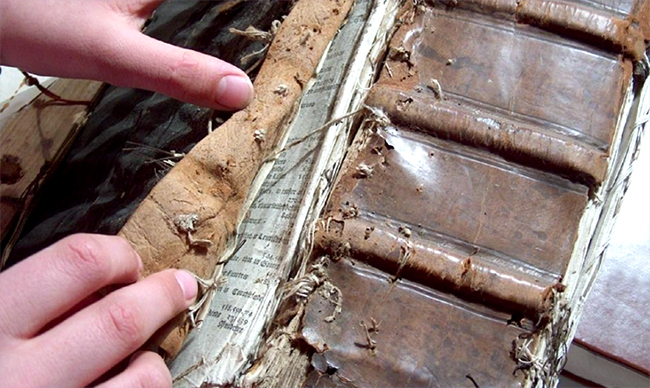
09 Aug Book Restoration with Gian Frontini
Gian Frontini has taught book making and restoration at the Folk School for many years. He runs a small bindery in Amherst Island, Ontario, and concentrates on restoration and conservation of early leather and vellum bindings. I talked Gian about his upcoming class: Book Restoration Clinic, about book making, the Folk School, and more. Enjoy our interview!
CP: Tell me about yourself. Where are you from, and what originally brought you to Brasstown?
GF: I live on an island in Lake Ontario with my wife Pat, who is professional potter and weaver. Amherst Island is a wonderful and peaceful place, ideal to lose yourself in your craft. My wife is English and I am Italian. We both came to Canada 50 years ago. I was employed in an international company and Canada is the place we loved the most of everywhere I worked all over the world. Brasstown came into our life when Pat met Martha Owen in 1999 at a spinners’ conference. The next year we came to the school, and since then it has become a bigger, and bigger part of our life.
CP: I know you have a cabin very close to the Folk School. Do you spend some of the year here?
GF: We spend three months of the year here, usually in the fall and spring. The summers are too lovely on Amherst Island and I love the fierce frozen wastes of the Northern winters. It is incredible that we have the choice of such lovely places.
CP: Why do you like teaching at the Folk School?
GF: The Folk School is an unique sharing experience for both teachers and students. It is rare to find a place where you can freely exchange ideas and knowledge. I love teaching at the Folk School because I learn from the students and make so many good friends.
CP: Tell me about your upcoming class.
GF: Book restoration is now my life occupation. There is something very rewarding to restore a much loved book to a functional state. I insist on maintaining originality, both the structure and the materials as they originally were. Too many books are refurbished with modern methods and loose their bibliographical character forever! It does not take any more effort to restore a book to its original structure and this is what the class is about. We are going to look at the book, understand it intimately, let it speak to us, and only then work on it.
CP: What kind of projects have people brought to your book restoration class?
GF: The range of projects is very wide: from the Victorian family bible weighing thirty pounds, to much read children’s books, to rare sixteen century learned tomes. Cloth, paper, leather vellum–all materials are unique and belonging to the book. I treat each project individually on a one-to-one basis, and work to adapt the restoration to the experience of the student.
CP: How did you get started in book making/book restoration?
GF: As much as one can plan one’s life, I wanted to have three careers, one in industry, one in academia, and one as a craftsman. I was fortunate in my long life to be able to achieve this.
My book binding experience goes back to my college days. In 1986, I studied under a binder at Case Western University for more formal instructions. I spent six years with her, while I was still working in industry, stealing time from evenings, weekends, and holidays. I have since trained with many professional restorers in North America and occasionally in Europe.
CP: What is the most interesting or meaningful book you have restored?
GF: I have worked on two important rare books in which I have had the most exciting and challenging experiences. One I did recently is a huge vellum binding of a History of England, 1529. Torn and dis-bound, it still had all the original pieces in a box, with the exception of the clasps. Two months of work restored it to a completely original condition!!!
The other book is in my collection Mattioli Medical Herbal, 1567. I acquired this book dis-bound and without cover. Every single one of the 1972 pages had to be washed. It is now splendid and restored to the original structure. I just love it!!!
CP: How has your background in organic chemistry helped you in book conservation?
GF: Organic chemistry is the science of materials made from natural sources including ancient organic residues like coal and hydrocarbons. Leather, paper, glues, soaps, and other materials used in book binding are all from organic sources. Knowing chemistry is essential to archival conservation in the choice of long lasting and harmless materials.
CP: Many of your classes embrace historical techniques and materials. Do you have a favorite era? What draws you to historical structures and styles?
GF: I love the binding from 1500 to 1780. Books during this time period were all handmade and used excellent materials: paper made of linen fibers and hand-tanned leather and vellum. The late medieval bindings and early renaissance are the pinnacle of the bookbinder art.
From 1780 onward, books were bound by machine, and the structures using hollow tubes and inferior papers have little appeal. Early in the 20th century the Arts & Crafts movement started to produce attractive books with the same medieval structure.
CP: What is your favorite material?
GF: I think vellum. It’s a little more difficult to work with, but it is hard to match the simplicity and the luminous feeling of a vellum binding.
CP: I see that you are a rare book collector. What is one of your favorite books in your collection?
GF: I have collected medical herbals from 1500 to 1830 all my life. The history of drugs and medical treatments was fascinating when plants were the only source. John Gerard’s 1597 herbal is my favorite source of endless discovery!!!
CP: Any closing words?
GF: I cannot say enough about what the school has done for my life and Pat’s life, for our creativity, and our new interests and friends. It is a unique and rare place!
Book Restoration Clinic
Two upcoming dates to choose from:
September 27-October 2, 2015
February 7-13, 2016
Come restore your favorite and worn books to their original beauty. Any binding from leather to vellum to cloth and paper can be restored using archival and long-lasting materials. Techniques are taught as a series of simple steps, many developed here in the last few years. Expect to restore two to three books during the week. If you have never done any binding, this class is an excellent introduction; if you are experienced, you will learn some of the latest conservation methods and materials. Register today!




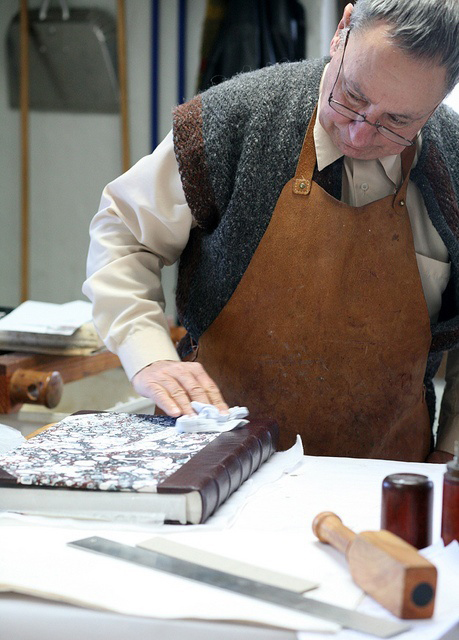
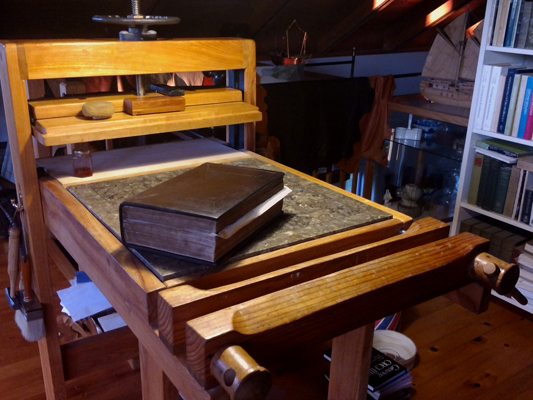
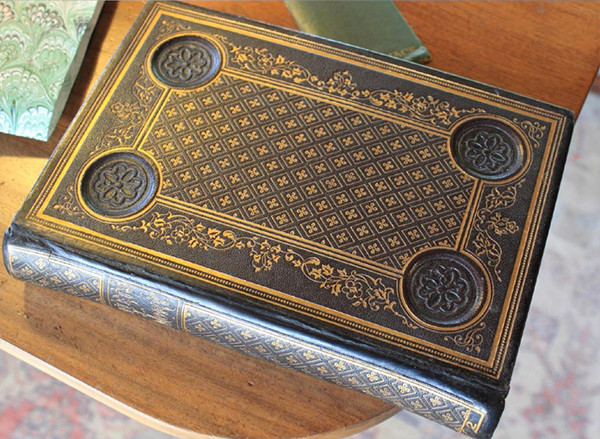
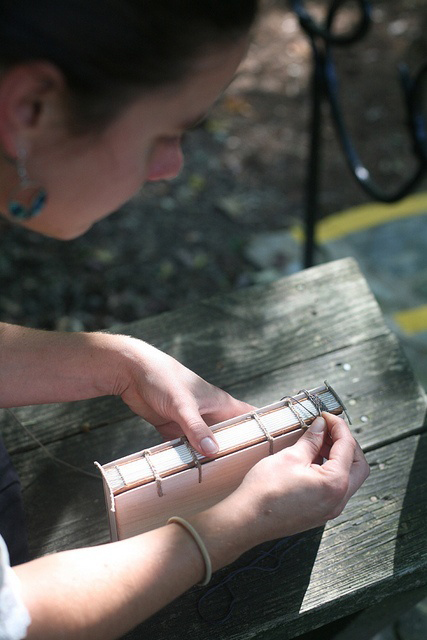
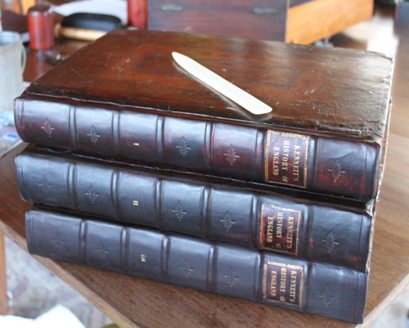
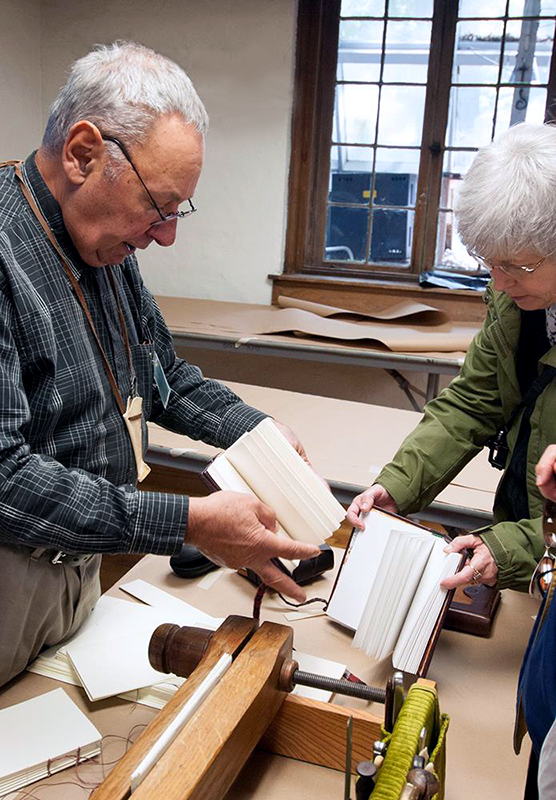
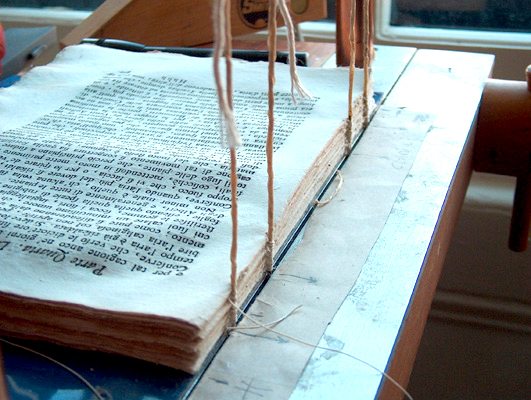
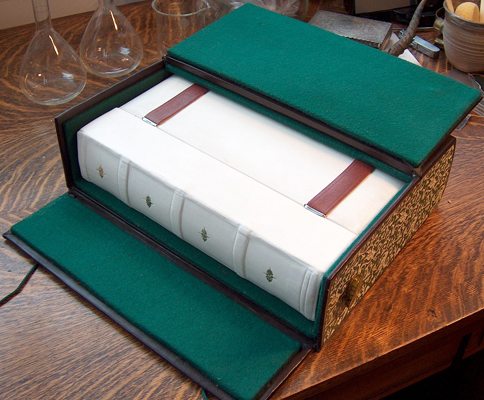
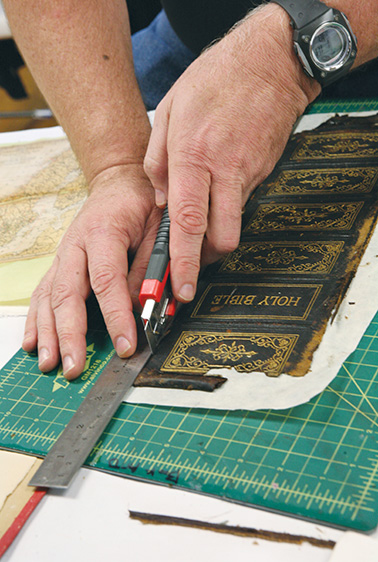
LETICIA UESUGI CHAGAS
Posted at 10:14h, 08 SeptemberHello, I would love to know if this course is available in an online format. If it it is, please, let me know, I have a lot of interest in such a great course
Pressley Tipper
Posted at 15:38h, 10 SeptemberLeticia-I’m sorry the class is not available online. You can see all of our virtual events on this page: https://www.folkschool.org/category/virtual-events/